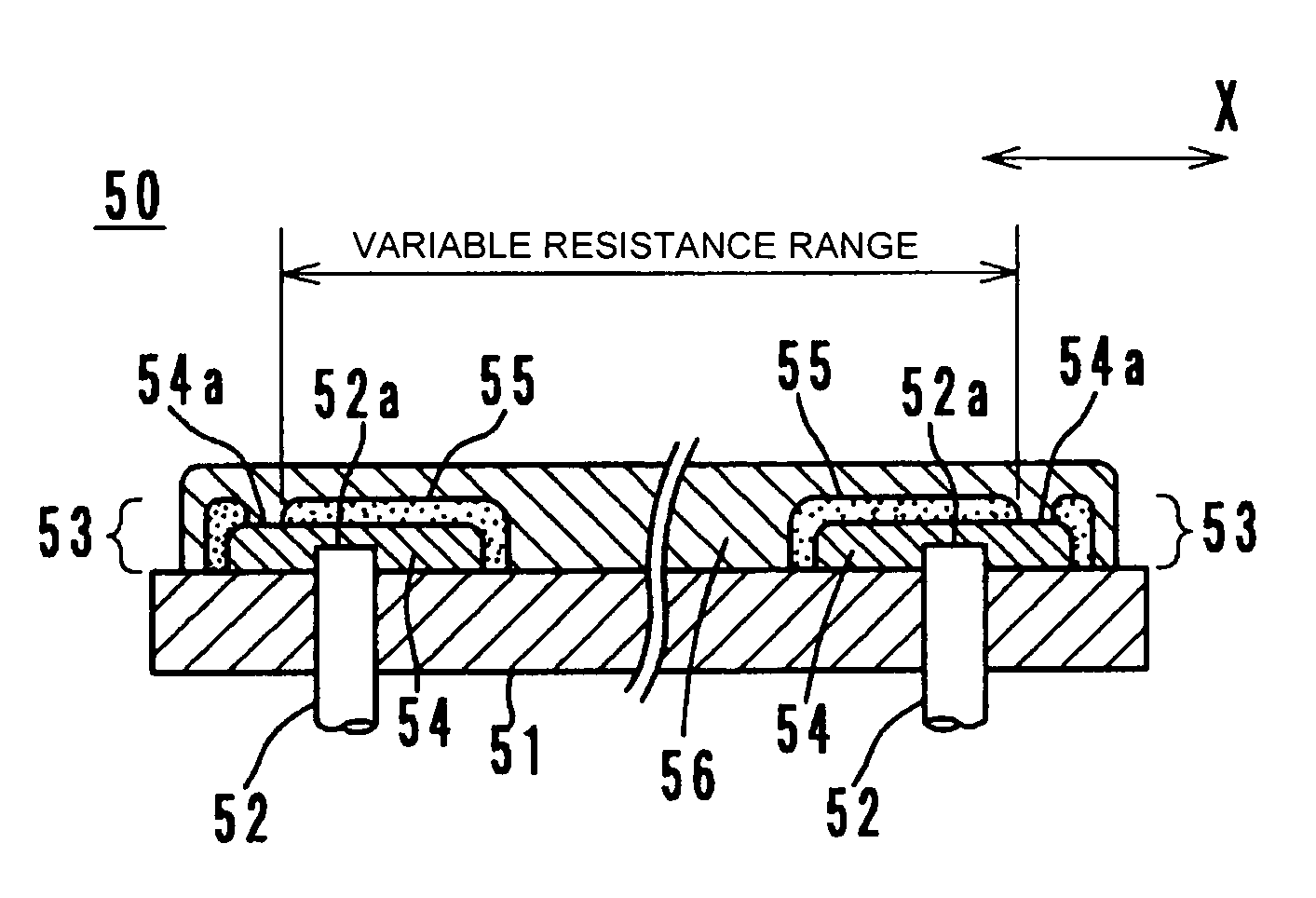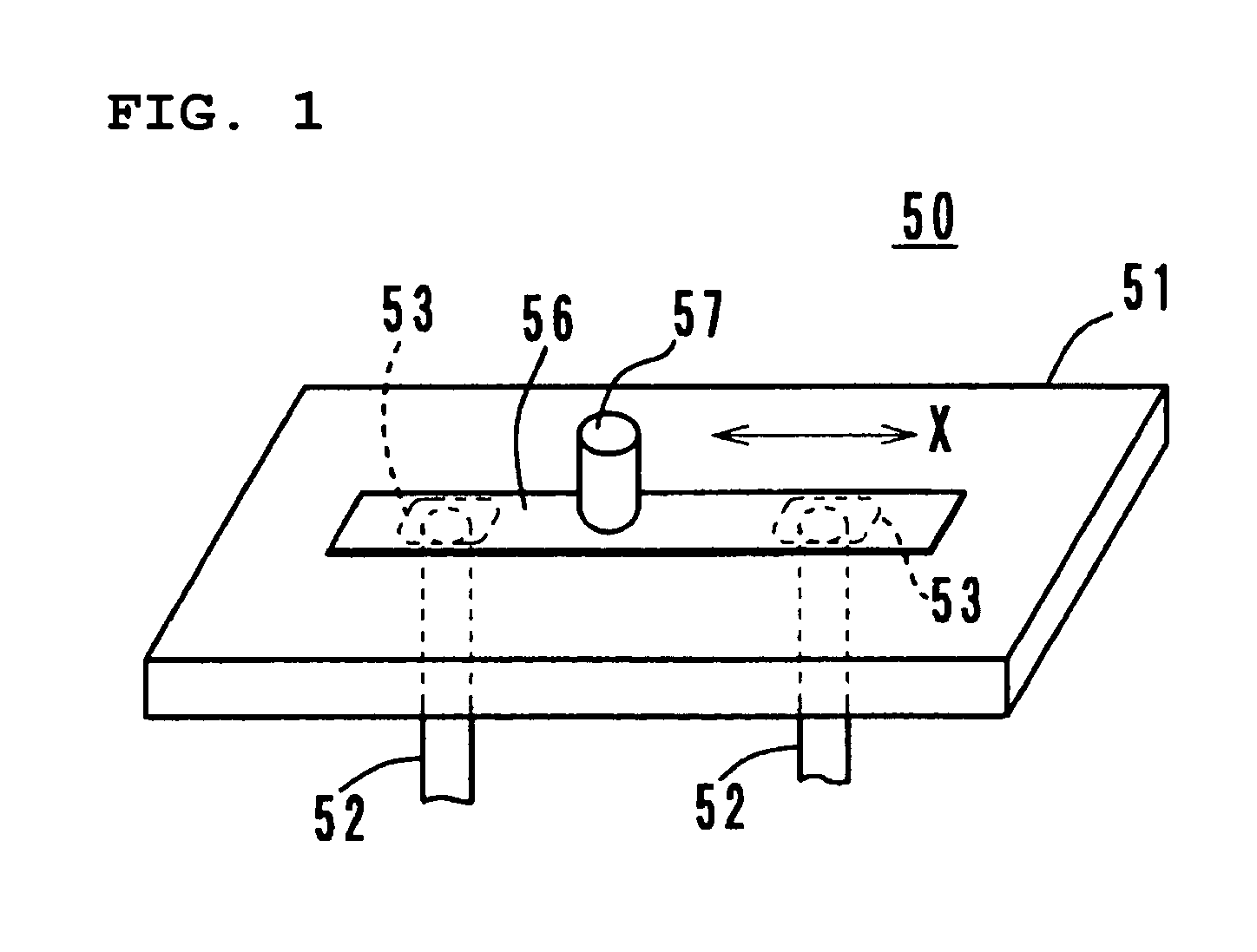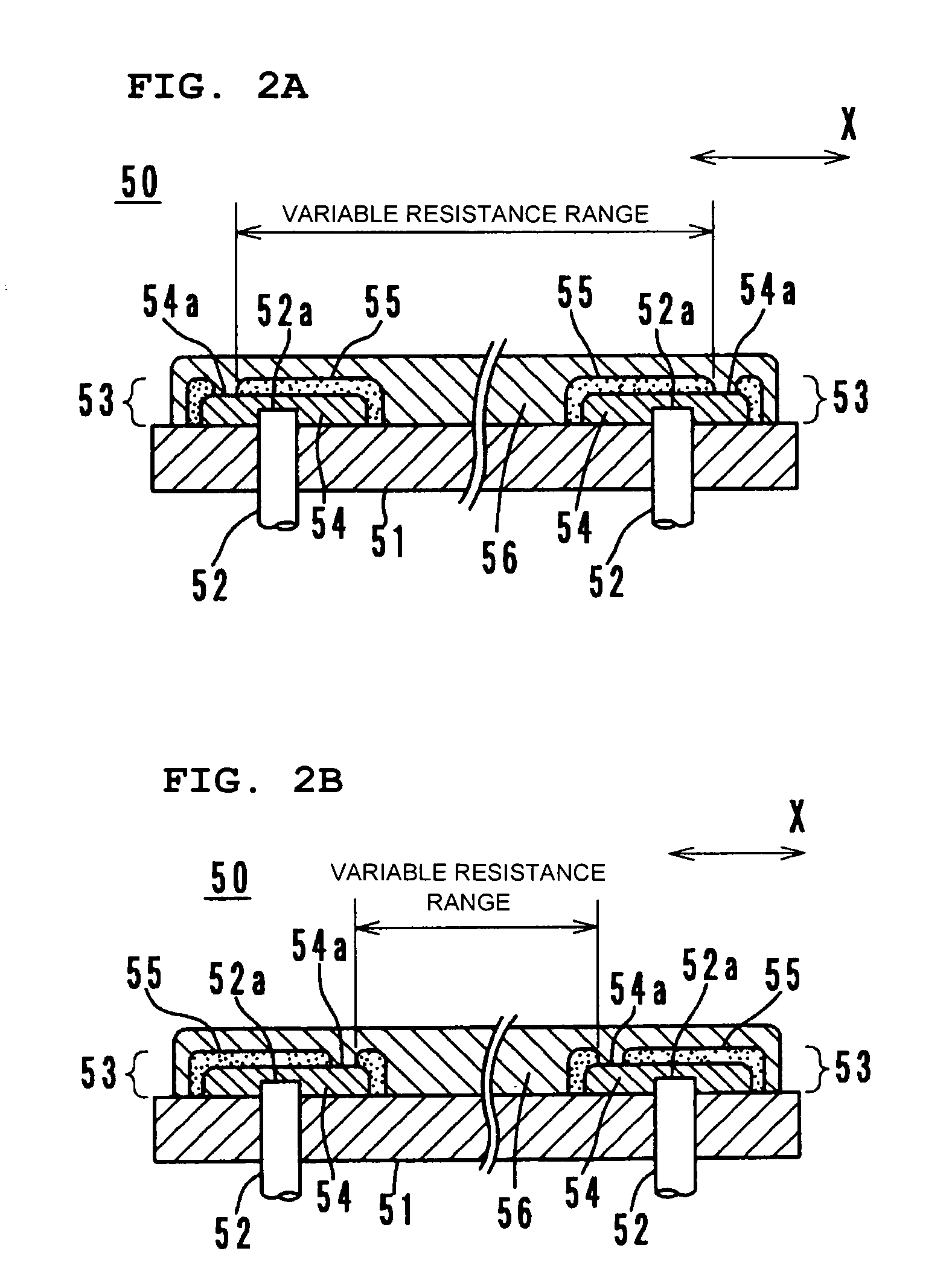Resistance substrate and variable resistor
a resistance substrate and variable resistor technology, applied in the direction of resistor details, adjustable resistors, resistors with sliding contact, etc., can solve the problems of inability to meet the needs of different types of molds, inconvenient design and production, and high cost of multiple types of molds, so as to achieve easy variation and increase the resistance range.
- Summary
- Abstract
- Description
- Claims
- Application Information
AI Technical Summary
Benefits of technology
Problems solved by technology
Method used
Image
Examples
first preferred embodiment
[0029]A resistance substrate according to a first preferred embodiment of the present invention will be described below with reference to FIGS. 1, 2A, and 2B.
[0030]A resistance substrate 50 includes a substrate member 51 made of insulating material, two conductive metal terminals 52, two conductive elements 53, and a resistor element 56.
[0031]Each metal terminal 52 includes an exposed portion 52a at the top, the exposed portion 52a being exposed on a surface of the substrate member 51. Each conductive element 53 includes the exposed portion 52a of the corresponding metal terminal 52 and an electrode film 54 which is electrically connected to the exposed portion 52a and which extends along a direction X in which the resistor element 56 extends. Each electrode film 54 is covered by an insulator film 55 such that an exposed portion 54a of the electrode film 54 is left uncovered.
[0032]The resistor element 56 is obtained by applying a conductive resin material to the surface of the subst...
second preferred embodiment
[0036]A rotary variable resistor according to a second preferred embodiment of the present invention will be described below with reference to FIGS. 3A to 7C.
[0037]As shown in FIGS. 3A, 3B, and 4, a variable resistor 1 includes a substrate member 10, a cover 20, and a rotating shaft 30 having a slider 35, all of which are preferably formed as molded resin components. The substrate member 10 includes a center hole 11, and a first terminal 12 and second terminals 13 are embedded in the substrate member 10.
[0038]The first terminal 12 includes terminal portions 12a projecting from side surfaces of the substrate member 10 and an annular current collector 12b in the central area. The current collector 12b is exposed on the surface of the substrate member 10. The first terminal 12 including the end portions 12a and the current collector 12b is obtained by cutting the first terminal 12 out of a single metal member. Each of the second terminals 13 includes a terminal portion 13a which projec...
PUM
 Login to View More
Login to View More Abstract
Description
Claims
Application Information
 Login to View More
Login to View More - R&D
- Intellectual Property
- Life Sciences
- Materials
- Tech Scout
- Unparalleled Data Quality
- Higher Quality Content
- 60% Fewer Hallucinations
Browse by: Latest US Patents, China's latest patents, Technical Efficacy Thesaurus, Application Domain, Technology Topic, Popular Technical Reports.
© 2025 PatSnap. All rights reserved.Legal|Privacy policy|Modern Slavery Act Transparency Statement|Sitemap|About US| Contact US: help@patsnap.com



